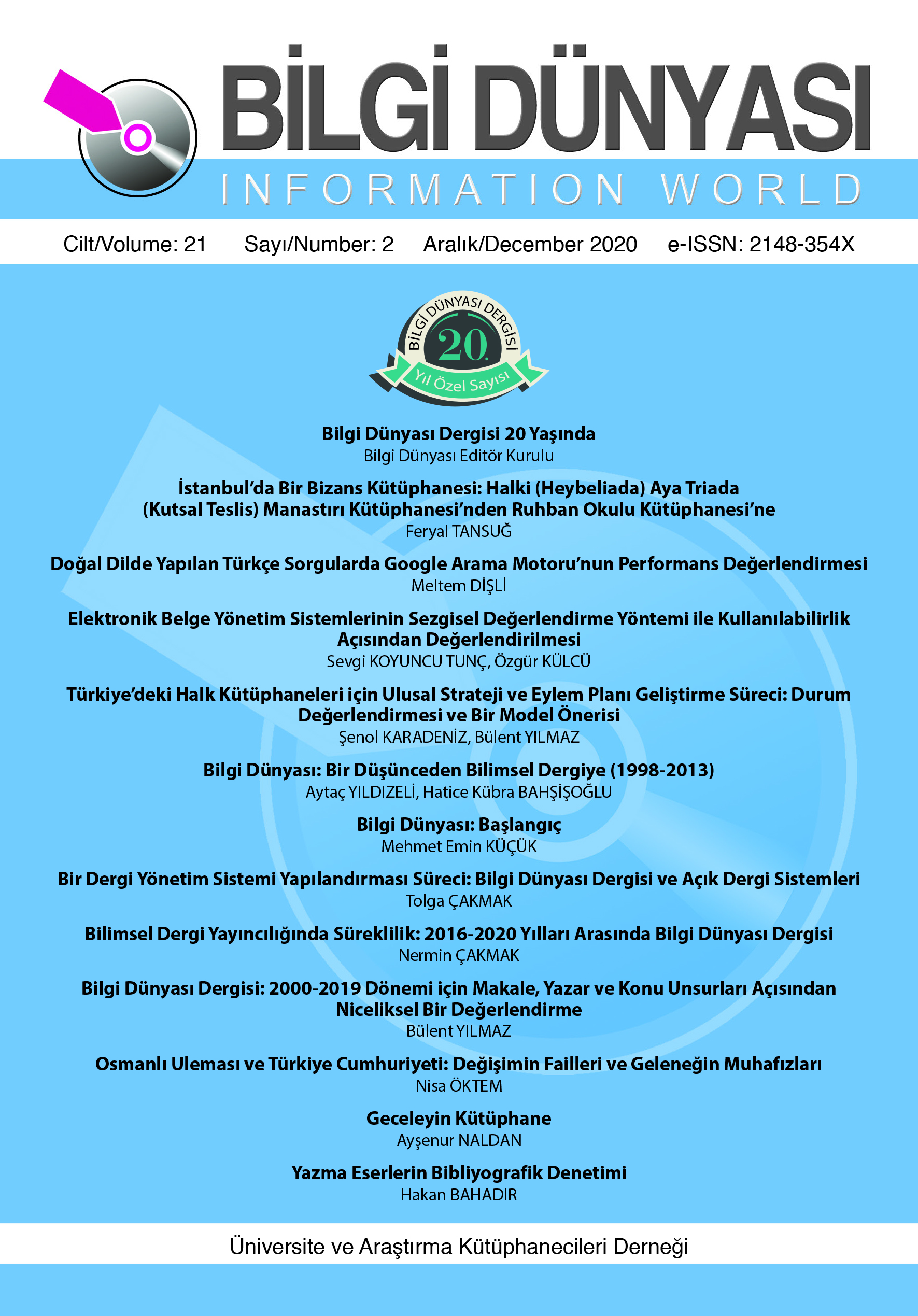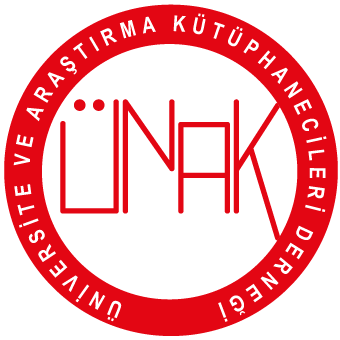Elektronik Belge Yönetim Sistemlerinin Sezgisel Değerlendirme Yöntemi ile Kullanılabilirlik Açısından Değerlendirilmesi
DOI:
https://doi.org/10.15612/BD.2020.556Anahtar Kelimeler:
EBYS, kullanılabilirlik, sezgisel değerlendirme, kullanılabilirlik değerlendirme kriterleriÖzet
Elektronik Belge Yönetim Sistemleri (EBYS), kurumsal hafızanın temel çıktıları olan belgelerin
oluşturulması, düzenlenmesi, korunması, mekân ve zamandan bağımsız olarak yetkili kişilerin
erişimine sunulması ve arşivlenmesi gibi işlevleriyle günümüzde birincil kurumsal ihtiyaç haline gelmiştir. Bir EBYS yazılımının sahip olması gereken özellikler ve işlevler, Türkiye’de TS 13298 standardında belirlenmiştir. Ancak bu standartta kullanılabilirlik ölçütleri gerekli oranda yer almamaktadır. Bu sistemler insanlar tarafından yönetilmekte ve kullanılmaktadır, bu nedenle kullanılabilirliğin göz ardı edilemeyecek derecede önemli olduğu bilinmeli, bu konu yazılım geliştirme süreçlerine en baştan dâhil edilmelidir. Ayrıca iş verimliliği açısından, EBYS’ lerin, geliştirme, satın alma, sertifikalandırma ve kullanım sürecinde kullanılabilirlik açısından belirli aralıklarla test edilmesi gerekmektedir. Bu araştırmanın amacı, “Sezgisel Değerlendirme” kullanılabilirlik test yönteminin EBYS üzerinde nasıl uygulanabileceğini, kullanılabilirliğe dair elde edilebilecek bilgi türlerini ve faydalarını açıklamaktır. Araştırmada literatür taraması sonucu elde edilen kullanılabilirlik ölçütleri listesi (sezgiseller) referans alınarak, Hacettepe Üniversitesi EBYS sistemi Sezgisel Değerlendirme yöntemi ile analiz edilmiştir. Bu araştırmada açıklanan yöntem yazılım geliştiriciler, kurumlar ve sertifika otoriteleri tarafından EBYS’ lerin kullanılabilirliğini etkileyen faktörleri tespit etme, sorunlu ara yüz öğelerini düzeltme ve satın alma kararlarına girdi sağlama amacıyla kullanılabilecektir.
İndirmeler
Yayınlanmış
Nasıl Atıf Yapılır
Sayı
Bölüm
Telif Hakkı (c) 2021 Bilgi Dünyası

Bu çalışma Creative Commons Attribution 4.0 International License ile lisanslanmıştır.






